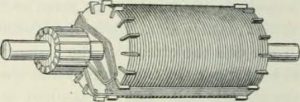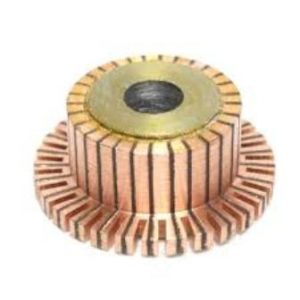An armature is a combination of the winding, commutator, brushes, and ball bearings. It is a core on which all these elements hold to fulfill its own action. It is liable for the generation of flux when the current through the winding associates with the field flux. This association of flux creates a reaction that puts some influence on the flux caused. The obtained flux either gets distorted or decreased due to the armature reaction. But commutator role is different from the armature as it is used for the generation of unidirectional energy. We shall discuss what is an armature and a commutator, and differentiation between armature and commutator.
Differentiation Between Armature and Commutator
What is an Armature?
It is a core and is of silicon steel material, it made of this material in order to reduce the losses (I,e hysteresis and eddy current losses). Armature winding is responsible for the production of flux. This winding is a collection of coils placed in the magnetic field.
What is Commutator?
It is a device used for the collection of current from the core winding. It is used as a converting device that converts the alternating power to direct power and vice-versa.
| Armature | Commutator |
| It receives current from the armature windings | It receives current from the armature core |
| The core consists of armature windings, commutator, and brushes | It has some segments |
| It gives current from the armature core to commutator | It converts the alternating power to direct power and vice-versa |
| It is made of silicon steel | It is made of Mica Insulation with 0.5mm thickness |
| Laminated to reduce armature losses | Insulated with Mica to reduce the sparking and to perform a smooth operation |
| It is a collection of coils placed inside the core | It is a collection of segments |
| It is responsible for the production of flux | It is responsible for the receiving of armature current |
| It produces flux that interacts with the main field to produce armature reaction | Due to the armature reaction, the commutator is able is to receive the current from the core winding. |
| It sends alternating current to segments | The alternating current is converted to direct by using the segments |
| It generates non-uniform current | It converts either to uniform or non-uniform current depending on the requirement |
| The figure which depicts the core is shown in the figure below.
| The figure that represents the segments is shown in the figure below.
|
Thus, in this article, we had an overview of the differentiation between an armature and a commutator. It is responsible for the production of flux and the segments are used to collect the current from the core and it the core that holds all the components like winding, commutator, brushes, and bearings. Here is a question for the readers, what is the function of a brush in DC machines?

